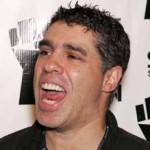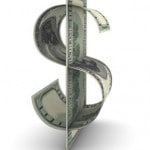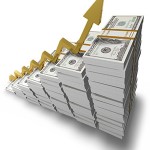Sirius XM Call – Smoke And Mirrors?

The first problem I have with the conference call is that it lacked any emotion or excitement. In a businesslike manner, numbers were given. Any questions from analysts were deflected or deferred. I don’t think one straight answer was given to any analyst at the end of the call. Ironically, Sirius XM offered much more clarity in the future, yet offered none at the call.
An analyst from JP Morgan wanted to know how much of the 400 million dollars in synergies might be realized this year, and the question was dodged much like a politician would avoid answering a question. When Merrill Lynch’s analyst asked about marketing plans, the response was that the company wanted to talk to the retail community before talking to the financial community. Again, no answer was given.
Cowan was reported by a certain clueless writer to be upset with a 3 year time-frame for OEM interoperable radio introductions. (This particular article was probably written to generate more web traffic to his site, so I won’t perpetuate it by linking to it). More on that in a moment. Mark Wienkes basically requested an instant combined report, but that did not really deserve an answer. The call was regarding results ending 6/30/08, not 8/07/08. This tells me that the analysts are looking to see the big picture, and not seeing it.
The problem with not answering reasonable questions is that analysts will lose interest in everything else and feel smitten along the way. All a human being can think about in that moment is that they were dismissed as though their question had little or no value.
The next problem with the conference call was that it was far from accurate, in my opinion. As noted above on the issue of interoperability, I find this inaccurate is because any manufacturer, at any time of their choosing can implement what is known as a “running change.” This happens frequently in the automotive manufacturing industry, and is usually the result of parts changes. A radio is a part. The only issue is making the new part fit seamlessly into the manufacturing process. If an interoperable radio was the only radio available, it would be installed in every car on every assembly line tomorrow.
The top line run rate was reported to be at 2.4 billion dollars. I looked at the combined income figures and the run rate is closer to 2.48 billion dollars. Thats an 80 million dollar upside surprise potential in revenue, in the current environment and without any increases given in Q4 revenue from new offerings. Under-promising in a big way seemed to be the play of the day.
Another analyst wanted to know if the 400 million in proposed synergies included incremental revenue increases from new offerings which was responded with a tone of “probably not, but we are going to keep you guessing!” No mention was made of any expected increases from the navigation offerings as well. As investors, it seems we are expected to continue to wait until Q4 to be informed. Is it any surprise the stock cannot recover?
The ironic thing is that most companies will put on a dog and pony show. This call was the exact opposite. Perhaps that was the intent in itself. As usual, we are left guessing as to what comes next.





I don’t watch Cramer’s show, but I did end up watching a video on TheStreet.com. He suggested that Sirius XM fire all the XM employees and close the second office.
This is what I was thinking during the whole merger process. Release half the employees and consolidate into one location, while doubling your total subscribers and expanding your current offerings.
Bring in the axes! Fire the WHOLE marketing team and contract it out to a firm that can actually make a company look “Cool or Hip”! Terrestrial radio is dead, yet Sirius XM has a radio guy running a technology company. Wasted potential is my honest opinion.
I find myself checking your site daily… I appreciate the time you guys are putting into keeping fresh content!
As I believe someone said last night on the conference call…it appears SiriusXM’s call was well planned and designed to give the analysts nothing. There has to be a reason behind that reasoning. Is it a gamble on SiriusXm’s part to say nothing now? Or was it that they they are so confident of blowing out 3Q and 4Q numbers. I guess we have to wait another 6 months to find out.
Jeremy,
I hear you. I feel the same way about ‘immediate’ consolation of all duplicate services within the new company. I suspect that a good many people are under contract, at least anybody making big money, and that their contracts would have to be paid up. Same goes for office space. If they have a significant lease then that lease would have to be paid to its termination before they could leave. Mel mentioned that he has that same problem with the palatial office surroundings that Sirius has in New York City. Bottom line is that they’re stuck with the leases and current contracts for the time being.
I do feel that as those contracts and leases run their courses that there will be a consolation of services. It just won’t be with the swiftness of a cost cutting falling ax that many of us had hoped for right after the merger. That is why most of the synergies that Mel keeps mentioning are projected for 2009 and beyond. They are simply boxed in for the time being.
I agree they are “under-reporting” about some additional revenue and the potential savings from synergies…but lets give them a pass on this one- OK?
The combined company was just permitted to see each other’s books about a week ago. I think its OK to hedge a little bit given the short time period this company has been together.
I expect more next quarter, but this call? They deserve a pass.
More meat would have been helpful. Obviously, Mel’s got some staff cutting to consider and he did not wish to telegraph his play calls to good employees who may be in limbo. It will take time to review employees at all levels.
There has been confusion related to ala carte and interoperability which will take time and clever marketing to clarify. It has been revealed that new equipment must be purchased in order to receive ala carte programming. It has been speculated that there is a piece of equipment that is currently available that is already ala carte ready.
As consumers (and shareholders also) we have concerned ourselves with interoperability and now we find out that ala carte (not interoperablity) will be the next step toward a perceptible and tangible fusion of the two networks. It will be tricky to disseminate (and effectively market) this product to the buying public in a way that is easy to understand. How will SIRI tell the public that it can have the best of both services now, but that something far superior will be coming down the pike later? We know this, but the “unsophisticated” consumer does not. SIRI must avoid tipping its hand. SIRI and XM have already suffered at the retail level from this same scenario. People had postponed purchasing either service b/c they did not know how the merger would pan out.
The right plays and the best ones need to be called. Will Mel be an top notch quarterback?
Mel’s GOING TO THE PRO-BOWL BABY!!!
I look to Energy Conversion Devices (ENER) as a recent example of what could happen with Sirius XM. Last year, at a time when ENER had hired a new CEO, Mark Morelli, and began focusing on their plan to move from 40 years of losses due to R&D into profitability through manufacturing, the conference call sounded much the same: here is our promise and plan to move to profitability and we expect it to happen on such and such a timeline. Limited visibility was given. At that time the stock was sitting at a multi-year low in the low 20’s but slowly put in a double bottom and began to be accumulated. Announcements were made from time to time indicating their reorganization was taking place and progress was being made.
As the recent stock action in ENER demonstrates, Mark Morelli was able to deliver on many of his promises a quarter or two ahead of Wall Street expectations. And the stock surged to trade as high $83 within 2 months of the announcement. The timeframe for ENER to surge 250% from a multi-year low to an all-time high was a little over 3 months.
Mel had two strategies with the latest conference call: hype the merger with few details available to him with little possibility it would result in a meaningful valuation for the company and the stock, or underpromise with the expectation that he will have hard data in the next conference call to prove that his plan is progressing — hopefully ahead of schedule. I know which approach I feel will serve the long term interests of shareholders better.
Best regards,
Chris J.
Qualification
Although there are no formal qualification criteria, analysts usually have graduate level training in finance such as MSF or MBA degrees, or are qualified accountants. “Industry experience” is often a pre-requisite and so analysts often have undergraduate degrees in related fields. Also, many analysts originally enter this domain through their practice as consultants or accountants and so a very wide range of qualifications is common.
Increasingly, it is (additionally) required that analysts earn a professional certification such as the Chartered Financial Analyst (CFA) designation , or the Certified International Investment Analyst (CIIA) designation, particularly if they wish to advance beyond a certain level within a firm.
There are also often regulatory requirements relating to the profession. For example, in the United States, sell-side or Wall Street research analysts must register with FINRA, the Financial Industry Regulatory Authority. In addition to passing the General Securities Representative Exam, candidates must pass the Research Analyst Examination (series 86/series87) in order to publish research for the purpose of selling or promoting publicly traded securities.
[edit] Skill
Most analysts will require basic analytical skills, and very good numerical skills. Importantly, communication skills are necessary to explain complex concepts to management or clients.
[edit] Controversies about financing
The research department sometimes doesn’t have the ability to bring in enough money to be a self-sustaining research company.
The research analysts department is therefore sometimes a unit of an investment, investment brokerage, or investment advisory firm.
Since 2002 there has been extra effort to overcome perceived conflicts of interest between the investment part of the firm and the public and client research part of the firm (see accounting scandals). For example, research firms are sometimes separated into two categories, “brokerage” and “independent”; the independent researchers are not part of an investment firm and don’t have the same incentive to issue overly favorable views on companies.
But that might not be sufficient to avoid all conflicts of interest. The debate is still about the way sell-side analysts are paid. Usually brokerage fees pay for their research. But this creates a temptation for analysts to act as stock sellers and to lure investors into “overtrading”.
Some consider that it would be sounder if investors had to pay financial research separately and directly to fully independent research firms.
Dan Reingold, a former securities analyst, gives examples of these and related controversies in his autobiographical book “Confessions of a Wall Street Analyst”.